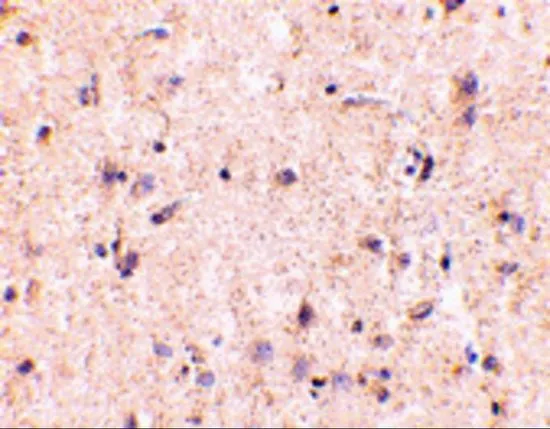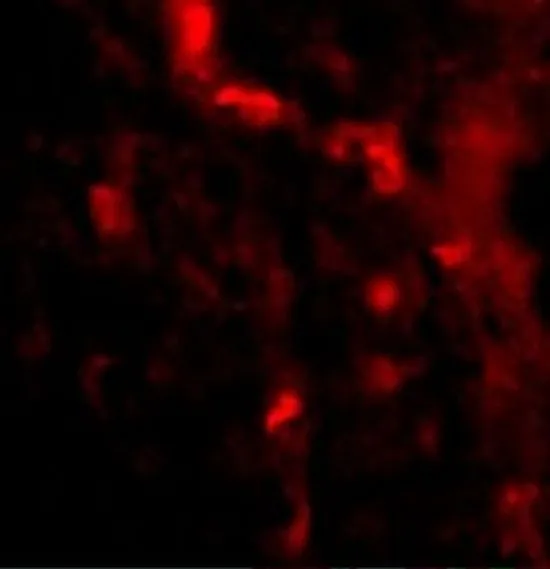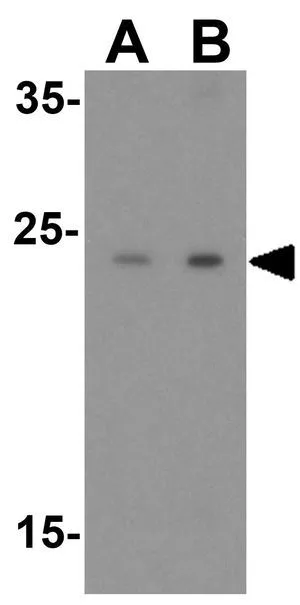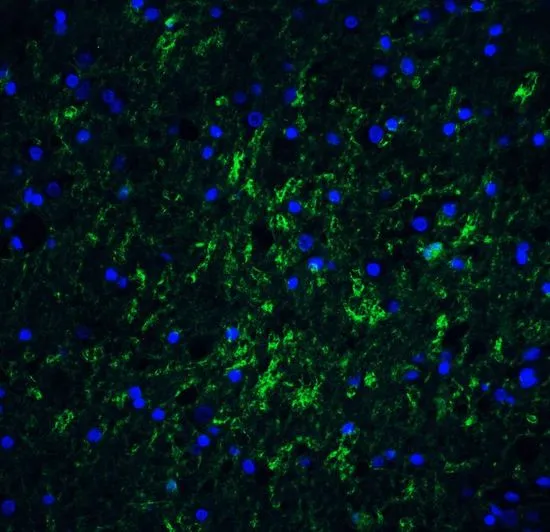
IHC-P analysis of human brain tissue using GTX85038 IRGM antibody. Working concentration : 5 microg/ml
IRGM antibody
GTX85038
ApplicationsWestern Blot, ELISA, ImmunoHistoChemistry, ImmunoHistoChemistry Paraffin
Product group Antibodies
TargetIRGM
Overview
- SupplierGeneTex
- Product NameIRGM antibody
- Delivery Days Customer9
- Application Supplier NoteWB: 1 - 2 microg/mL. IHC-P: 5 microg/mL. *Optimal dilutions/concentrations should be determined by the researcher.Not tested in other applications.
- ApplicationsWestern Blot, ELISA, ImmunoHistoChemistry, ImmunoHistoChemistry Paraffin
- CertificationResearch Use Only
- ClonalityPolyclonal
- Concentration1 mg/ml
- ConjugateUnconjugated
- Gene ID345611
- Target nameIRGM
- Target descriptionimmunity related GTPase M
- Target synonymsIBD19, IFI1, IRGM1, LRG-47, LRG47, immunity-related GTPase family M protein, LPS-stimulated RAW 264.7 macrophage protein 47 homolog, LRG-47-like protein, immunity-related GTPase family, M1, interferon-inducible protein 1
- HostRabbit
- IsotypeIgG
- Scientific DescriptionAutophagy, the process of bulk degradation of cellular proteins through an autophagosomic-lysosomal pathway is important for normal growth control and may be defective in tumor cells. It is involved in the preservation of cellular nutrients under starvation conditions as well as the normal turnover of cytosolic components. Two of the strongest hits implicate genes IRGM and ATG16L1, which encode proteins thought to be critical to the autophagy pathway and being significantly associated with Crohns disease. In mouse, IRGM belongs to a family of gamma-interferon-induced GTP-binding proteins of approximately 48 kDa. Murine IRGM induces autophagy and generates large autolysosomal organelles as a mechanism for the elimination of intracellular Mycobacterium tuberculosis. Human IRGM is also involved in autophagy and plays a role in the control of intracellular pathogens and in the reduction of intracellular bacillary load.
- Storage Instruction-20°C or -80°C,2°C to 8°C
- UNSPSC12352203
References
- Fan Y, Huo X, Guo B, et al. Cullin 4b-RING ubiquitin ligase targets IRGM1 to regulate Wnt signaling and intestinal homeostasis. Cell Death Differ. 2022,29(9):1673-1688. doi: 10.1038/s41418-022-00954-9Read this paper






